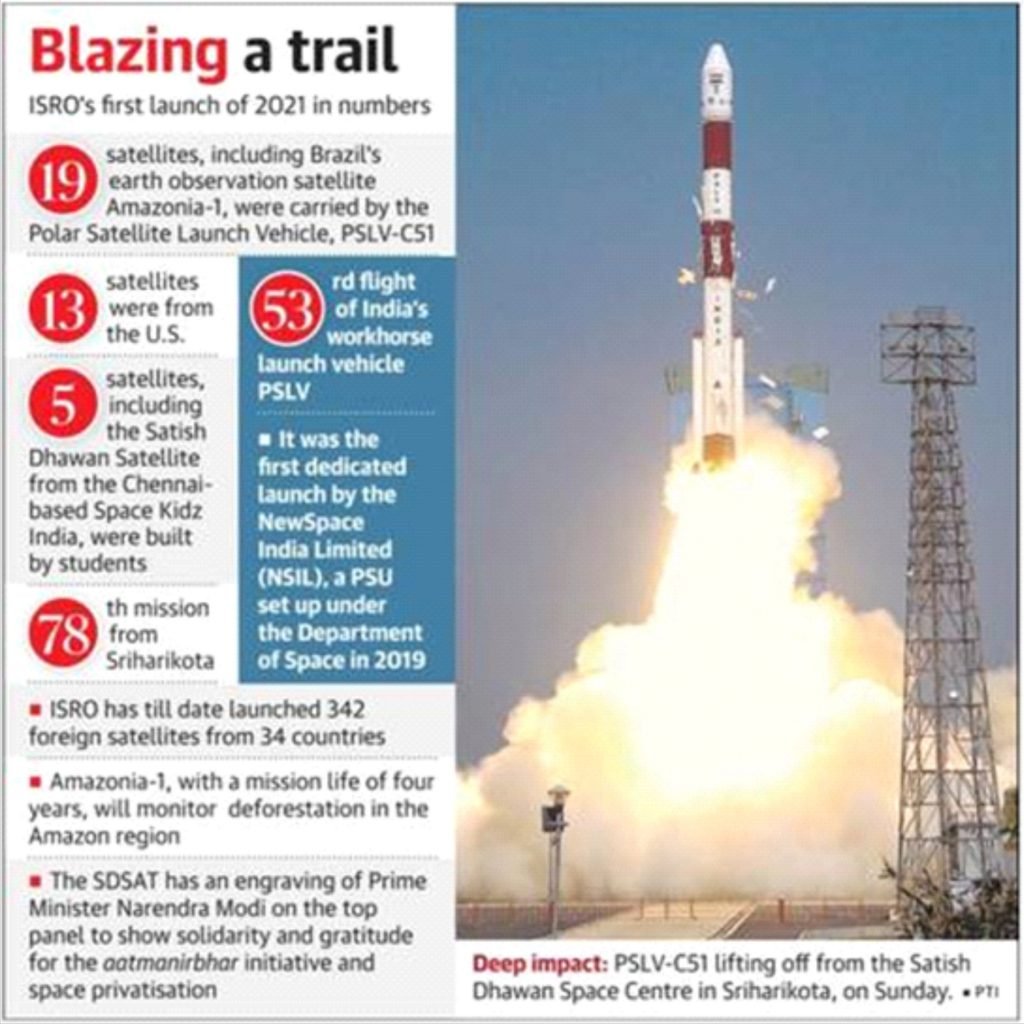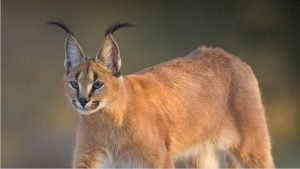Current Affairs (1st March 2021)
‘Lateral entry’
CONTEXT:
- In February 2021, the Union Public Service Commission (UPSC) issued an advertisement seeking applications “from talented and motivated Indian nationals willing to contribute towards nation building” for three posts of Joint Secretary and 27 of Director in central government Departments.
- These individuals, who would make a “lateral entry” into the government secretariat, would be contracted for three to five years. These posts were “unreserved”, meaning were no quotas for SCs, STs and OBCs.
ABOUT:
- NITI Aayog, in its three-year Action Agenda, and the Sectoral Group of Secretaries (SGoS) on Governance in its report submitted in February 2017, recommended the induction of personnel at middle and senior management levels in the central government.
- These ‘lateral entrants’ would be part of the central secretariat which in the normal course has only career bureaucrats from the All India Services/ Central Civil Services.
- A Joint Secretary, appointed by the Appointments Committee of the Cabinet (ACC), has the third highest rank (after Secretary and Additional Secretary) in a Department, and functions as administrative head of a wing in the Department. Directors are a rank below that of Joint Secretary.
Government’s reasoning :
- Government has, from time to time, appointed some prominent persons for specific assignments in government, keeping in view their specialised knowledge and expertise in the domain area.
- Lateral recruitment is aimed at achieving the twin objectives of bringing in fresh talent as well as augment the availability of manpower.
Previous ‘lateral entry’ appointments:
- The new ad is for the second round of such recruitments. Earlier, the government had decided to appoint experts from outside the government to 10 positions of Joint Secretary in different Ministries/Departments and 40 positions at the level of Deputy Secretary/Director.
- The ad for the Joint Secretary-level appointments, issued in early 2018, attracted 6,077 applications; after a selection process by the UPSC, nine individuals were recommended for appointment in nine different Ministries/Departments in 2019.
Criticism
- Groups representing SCs, STs and OBCs have protested the fact that there is no reservation in these appointments.
- It has been alleged that ruling government at the centre is opening back doors to bring its own people openly. Who cares about those candidates who are preparing for years?

ISRO’s PSLV-C51 launch
Context:
- The first of these satellites, called Anand(satellite from Pixxel India), was supposed to be on the PSLV-C51 rocket that lifted off from the Sriharikota launching range recently.
About:
- Pixxel India, a Bengaluru-based start-up that completed two years of existence, is planning to place a vast constellation of earth-imaging satellites for continuous monitoring of every part of the globe, and beam high-resolution imagery and other data that can be utilized for a variety of applications in climate change, agriculture and urban planning.
- The first of its satellites, called Anand, was supposed to be on this PSLV-C51 rocket that took off from the Sriharikota launching range this morning.
- But before the launch, the company announced that due to “certain software issues” during testing, it would not go ahead with the launch of the satellite at this time.
- Given the time and effort that has gone into making the satellite, it did not make sense to rush a satellite to launch in which one does not have complete confidence at this time.
- Pixxel India have thus decided to push launch by a few weeks, re-evaluate the satellite software, and test it rigourously over the next few weeks.
- The launch of PSLV-C51 would be “special” because of Pixxel India’s satellite since it marked the beginning of a new age in which private companies would become an equal partner in India’s space sector.
- The government of India has initiated reforms (opened up the space sector to facilitate participation of private companies).
- The launch eventually happened without the Pixxel India satellite, but the mission was not without its ‘first’. Its main payload, an earth-observation satellite called Amazonia-1 from Brazil, is the first commercial venture for New Space India Limited, the new marketing arm of ISRO that was created two years ago.
- ISRO already had another marketing company called Antrix but that is bogged down in long winding litigation to settle the controversial Devas deal.
- Amazonia-1 is a sun-synchronous satellite, the first one to be fully designed, integrated, tested and operated by Brazil’s National Institute for Space Research.
- It can generate images of any part of the world every five days, but would be used mainly to provide remote sensing data for users monitoring deforestation in the Amazon forests.
- Besides the Amazonia-1, the mission has also carried 18 other satellites, including a flock of 12 SpaceBEEs from the United States, and another group of three satellites called UNITYsat jointly developed by students of three engineering colleges – Jeppiaar Institute of Technology, Sriperumbudur, GH Raisoni College of Engineering, Nagpur and Sri Shakhti Institute of Engineering and Technology, Coimbatore.
- In addition, the mission also carried a nano satellite developed by Space Kidz India that is intended to study space weather and demonstrate long-range communication technologies.

The caracal
Context:
The National Board for Wildlife and Union Ministry of Environment, Forest and Climate Change last month included the caracal, a medium-sized wildcat found in parts of Rajasthan and Gujarat, in the list of critically endangered species.
Though not under grave threat in its other habitats, the animal is on the verge of extinction in India. The recovery programme for critically endangered species in India now includes 22 wildlife species.
The wildcat
Besides India, the caracal is found in several dozen countries across Africa, the Middle East, Central and South Asia. While it flourishes in parts of Africa, its numbers in Asia are declining.
The wildcat has long legs, a short face, long canine teeth, and distinctive ears — long and pointy, with tufts of black hair at their tips.
The iconic ears are what give the animal its name — caracal comes from the Turkish karakulak, meaning ‘black ears’.
In India, it is called siya gosh, a Persian name that translates as ‘black Ear’. A Sanskrit fable exists about a small wild cat named deergha-karn or ‘long-eared’.
In history and myth
The earliest evidence of the caracal in the subcontinent comes from a fossil dating back to the civilisation of the Indus Valley c. 3000-2000 BC.
The caracal has traditionally been valued for its litheness and extraordinary ability to catch birds in flight; it was a favourite coursing or hunting animal in medieval India.
Firuz Shah Tughlaq (1351-88) had siyah-goshdarkhana, stables that housed large numbers of coursing caracal.
It finds mention in Abul Fazl’s Akbarnama, as a hunting animal in the time of Akbar (1556-1605).
Descriptions and illustrations of the caracal can be found in medieval texts such as the Anvar-i-Suhayli, Tutinama, Khamsa-e-Nizami, and Shahnameh.
The caracal’s use as a coursing animal is believed to have taken it far beyond its natural range to places like Ladakh in the north to Bengal in the east.
The East India Company’s Robert Clive is said to have been presented with a caracal after he defeated Siraj-ud-daullah in the Battle of Plassey (1757).
Declining numbers
The caracal is an elusive, primarily noctural animal, and sightings are not common. Very few studies have been conducted on the wildcat, and there is no reliable data on populations now or in the past. In the absence of sightings, several experts fear the caracal could be on the verge of extinction in India — some estimates put their numbers at no more than 50; other experts say an accurate assessment is difficult.
The caracal has historically lived in 13 Indian states, in nine out of the 26 biotic provinces. In the period before Independence, the animal roamed an estimated area of 7.9 lakh sq km; between then and 2000, however, this habitat shrunk by almost a half. After 2001, sightings have been reported from only three states.
“From 2001 to 2020, the reported extent of occurrence further decreased by 95.95%, with current presence restricted to 16,709 sq km, less than 5% of the caracal’s reported extent of occurrence in the 1948-2000 period,” according to Khandal et al.
The caracal could be earlier found in arid and semi-arid scrub forest and ravines in Rajasthan, Delhi, Haryana, Punjab, Gujarat, Madhya Pradesh, Uttar Pradesh, Maharashtra, Andhra Pradesh, Telangana, Odisha, Jharkhand, and Chhattisgarh. Today, its presence is restricted to Rajasthan, Kutch, and parts of MP.
The caracal is rarely hunted or killed — in recent years, cases have been detected of the animal being captured to be sold as exotic pets — and the decline of its population is attributable mainly to loss of habitat and increasing urbanisation. Experts point out that the caracal’s natural habitat — for example the Chambal ravines — is often officially notified as wasteland. Land and environment policies are not geared towards the preservation of such wasteland ecology, rather they seek to ‘reclaim’ these areas to make them arable.
Infrastructure projects such as the building of roads lead to the fragmentation of the caracal’s ecology and disruption of its movement. The loss of habitat also affects the animal’s prey which includes small ungulates and rodents.
The listing of the caracal as critically endangered is expected to bring central funding to conservation efforts. It is likely to ensure that the animal is studied comprehensively for the first time, including its home range, population, prey, etc.
Such study will also throw light on the much neglected “wastelands” in the country, which are home to a large number of animal and bird species, including leopards, Asiatic wild cats, rust spotted cats, sloth bears, wolves, wild dogs, civets, etc.

Migratory birds
CONTEXT:
Migratory birds in and around Chilikalake and Bhitarkanika National Park have started their homeward journey earlier, as temperatures in Odisha began to soar.
ABOUT:
The birds arrive in the region in November and migrate back around mid-March or early April when the temperature hovers around 39 degree Celsius.
This winter, 1,242,826 migratory birds belonging to 190 species arrived at the water bodies around Chilika Lake, Asia’s largest salt-water lagoon and 136,092 birds belonging to 121 species arrived at Bhitarkanika, the second-largest mangrove forest in India.
They flew in from places as far off as Siberia, Afghanistan, Iran, Iraq, the Himalayan region and central Europe.
Rising temperature coupled with the decreasing water levels in the lake also contributed to this early migration.
Though breeds like shoveler, pintail, gadwall, wigeon, common pochard, garganey, tuffed duck, common teal, coot and other avian species have started leaving, some wader species like curlew, pipit, white eye and other birds have not shown any urgency to leave, said Bikash Ranjan Dash the Divisional Forest Officer (DFO) of Bhitarkanika National Park.
This is because some water birds like ducks can live in shallow water, said S Balachandran a noted ornithologist and deputy director of Bombay Natural History Society (BNHS).

